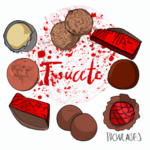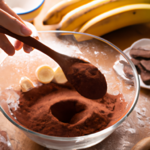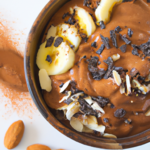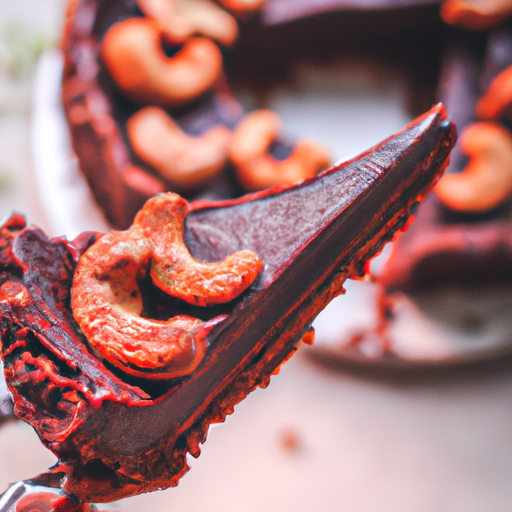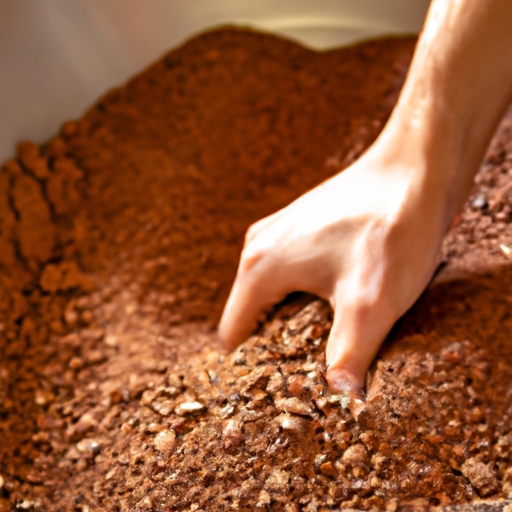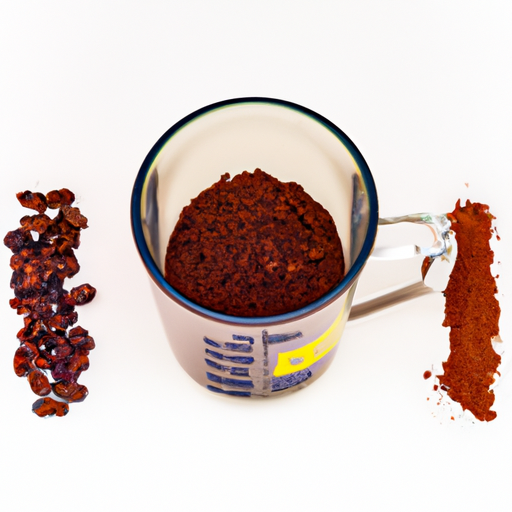Have you ever pondered how to unleash the complete potential of raw cacao powder? Get ready to be impressed as I guide you through a journey of delightful flavors and nourishing benefits.
Raw cacao powder, with its rich and velvety texture, is a powerhouse of nutrients and antioxidants that can elevate your beverage game to a whole new level. From hot cacao drinks that warm your soul to refreshing iced cacao concoctions, the possibilities are endless.
Fancy a cacao smoothie to kickstart your day or a decadent cacao latte for a cozy afternoon treat? Look no further. And let’s not forget about the indulgence of a cacao milkshake or the sophistication of a cacao martini.
But it doesn’t stop there. With cacao energy balls, chia pudding, and even cacao-infused water, you can savor the benefits of this heavenly ingredient in numerous ways.
So, grab your favorite mug, get ready to embark on a cacao-filled adventure, and let me show you how to drink raw cacao powder like a pro.
Key Takeaways
- Cacao powder can be mixed with alcohol and ice to create sophisticated cocktails.
- Baking with cacao powder adds a rich chocolate flavor to baked goods.
- Cacao energy balls made with cacao powder, dates, nuts, and a sweetener are a convenient and nutritious snack.
- Cacao infused water provides a refreshing way to enjoy the benefits of cacao, and can be customized with flavors like cinnamon or vanilla.
Hot Cacao Drink
Now, let’s get cozy and indulge yourself in a warm cup of heavenly hot cacao drink that will transport you to a world of blissful relaxation.
Hot cacao recipes are not only delicious but also packed with health benefits of raw cacao. Raw cacao powder is rich in antioxidants, which help fight against free radicals and promote overall well-being.
To make a hot cacao drink, simply mix one tablespoon of raw cacao powder with a cup of hot milk or water. You can add a sweetener of your choice and a pinch of cinnamon for extra flavor. Stir well until the powder is fully dissolved and enjoy the comforting aroma and smooth taste of this decadent beverage.
Now, let’s move on to the next section and explore the refreshing world of iced cacao drink.
Iced Cacao Drink
First, imagine yourself sipping on a heavenly concoction that tastes like a chocolate explosion in your mouth. Now, let me introduce you to the world of iced cacao drinks. These refreshing beverages are perfect for those hot summer days when you need a cool and energizing pick-me-up. One delightful option is the iced cacao smoothie, which blends the richness of raw cacao powder with the creaminess of your favorite plant-based milk. Another popular choice is the cacao-infused iced coffee, which combines the bold flavors of coffee with the health benefits of cacao. Both of these drinks provide a delightful way to incorporate raw cacao powder into your daily routine. So, let’s dive into the world of cacao smoothies and explore how you can create these delicious drinks at home.
Cacao Smoothie
Indulge in the velvety goodness of a cacao smoothie that will transport your taste buds to chocolate paradise.
Not only is this smoothie delicious, but it also packs a punch in terms of health benefits.
Cacao, the main ingredient in this smoothie, is rich in antioxidants, which help protect our cells from damage caused by free radicals.
It is also a great source of magnesium, iron, and fiber. These nutrients support heart health, improve mood, and aid digestion.
To make the perfect cacao smoothie, simply blend together ripe bananas, almond milk, a spoonful of cacao powder, and a handful of spinach for an added nutrient boost.
The result is a creamy and nutritious drink that will keep you energized throughout the day.
So, why not give this cacao smoothie a try and experience the many benefits it has to offer?
Next up, let’s explore the wonderful world of cacao lattes.
Cacao Latte
Enjoy the rich and velvety goodness of a cacao latte that will transport your taste buds to a cozy chocolate paradise. Cacao latte recipes are not only delicious but also packed with health benefits.
The cacao powder used in this latte is a superfood that is rich in antioxidants, magnesium, and iron. These nutrients are known to boost mood, improve brain function, and support a healthy heart.
To make a cacao latte, simply combine warm milk of your choice with cacao powder and a sweetener like honey or maple syrup. You can also add a pinch of cinnamon or nutmeg for extra flavor.
To enhance the experience, try these variations:
- Add a dash of vanilla extract for a subtle sweetness.
- Sprinkle some shaved dark chocolate on top for a decadent touch.
Now, let’s move on to the next section about cacao milkshake, where we will explore another delightful way to enjoy the goodness of cacao.
Cacao Milkshake
When it comes to indulgent dessert treats, nothing beats a cacao milkshake.
This creamy and rich beverage is a perfect way to satisfy your sweet tooth.
To make it, simply blend raw cacao powder with your favorite ice cream or frozen yogurt for a luscious and decadent treat.
Top it off with a dollop of whipped cream and a drizzle of chocolate sauce for an extra touch of indulgence.
Trust me, this cacao milkshake is a dessert that you won’t be able to resist.
Indulgent Dessert Treat
If you’re in the mood for a decadent dessert, try incorporating raw cacao powder into your recipes for a truly indulgent treat.
Raw cacao powder is a versatile ingredient that can be used in a variety of indulgent dessert recipes. Not only does it add a rich chocolate flavor, but it also offers several health benefits.
Raw cacao powder is packed with antioxidants, which can help reduce inflammation and improve heart health. It is also a great source of magnesium, iron, and fiber.
Incorporating raw cacao powder into your desserts allows you to indulge in a sweet treat while still reaping the benefits of this superfood.
So why not try blending it with some ice cream or frozen yogurt for a truly indulgent and satisfying dessert experience?
Blending with Ice Cream or Frozen Yogurt
Blending raw cacao powder with ice cream or frozen yogurt creates a heavenly concoction that takes indulgence to a whole new level. The rich and intense flavor of the cacao powder pairs perfectly with the creamy texture of the ice cream or frozen yogurt, resulting in a dessert that is both decadent and satisfying.
To add even more variety to your cacao powder creations, consider blending it with fruit smoothies. The natural sweetness of the fruits complements the bitterness of the cacao, creating a balanced and refreshing treat. You can also incorporate raw cacao powder into baked goods like brownies or cookies for a healthier twist on traditional recipes.
To take your cacao powder dessert to the next level, top it with whipped cream or drizzle it with chocolate sauce. These additions add a touch of elegance and make your creation look even more tempting. So go ahead, indulge in the deliciousness of blending raw cacao powder with ice cream or frozen yogurt, and take your desserts to new heights of decadence.
Topping with Whipped Cream or Chocolate Sauce
To enhance the indulgence of your dessert, why not top it with a generous dollop of whipped cream or drizzle it with luscious chocolate sauce?
If you’re looking for whipped cream alternatives, you can try using coconut cream or almond cream. These dairy-free options will still add a creamy texture and a hint of sweetness to your raw cacao powder drink.
As for creative chocolate pairings, consider adding a sprinkle of sea salt or a dash of cinnamon to elevate the flavors. You can also experiment with adding a touch of mint extract or a splash of vanilla for a refreshing twist.
Now that you have your decadent whipped cream and chocolate sauce, let’s move on to the next section and explore the world of cacao martinis.
Cacao Martini
I love indulging in an elegant and boozy beverage every now and then, and one of my favorites is a Cacao Martini.
This delicious concoction combines the rich flavors of cacao with the smoothness of vodka or rum, creating a drink that is both sophisticated and satisfying.
To take it up a notch, I like to garnish my Cacao Martini with chocolate shavings or cocoa nibs, adding a touch of decadence to each sip.
Elegant and Boozy Beverage
For an elegant and boozy beverage, you’ll love sipping on a cocktail made with raw cacao powder. Raw cacao powder adds a rich and deep chocolate flavor to your drink, making it perfect for those special occasions or when you simply want to indulge.
One popular option is to create an elegant cocktail by mixing raw cacao powder with vodka or rum. This combination creates a smooth and velvety drink that is sure to impress your guests. Simply mix a tablespoon of raw cacao powder with your preferred alcohol and add some ice. Shake or stir until well combined and strain into a martini glass.
The result is a sophisticated and decadent drink that is both delicious and visually stunning.
Mixing with Vodka or Rum
After exploring the elegant and boozy beverage options for raw cacao powder, let’s dive into another exciting avenue: mixing it with vodka or rum. Trust me, this is where things get really interesting. By combining the rich flavors of cacao with the smoothness of vodka or the complexity of rum, you can create some truly enchanting cocktails. Here are four ideas to get you started:
-
Cacao Martini: Shake up vodka, raw cacao powder, and a touch of simple syrup for a decadent twist on a classic.
-
Cacao Old Fashioned: Muddle raw cacao powder with sugar, bitters, and a splash of rum for a sophisticated take on this timeless drink.
-
Cacao Mojito: Infuse your rum with cacao nibs, then mix it with fresh mint, lime juice, and a hint of sugar for a refreshing tropical treat.
-
Cacao Margarita: Experiment with mixing tequila and raw cacao powder for a unique twist on this beloved cocktail.
Now that you’ve discovered these delightful cacao-infused cocktails, let’s move on to the next step: garnishing with chocolate shavings or cocoa nibs.
Garnishing with Chocolate Shavings or Cocoa Nibs
Garnishing with chocolate shavings or cocoa nibs is a simple yet effective way to elevate your beverage. It adds a visually appealing touch and enhances the flavor profile by providing a subtle hint of chocolate in each sip. Moreover, cocoa nibs are packed with antioxidants and can be a healthy addition to your drink.
Cacao powder can also be used in baking recipes to infuse a rich chocolate flavor into cakes, cookies, and other treats. So, why not take your cacao journey further and explore the world of cacao energy balls, a delightful and nutritious snack option.
Cacao Energy Balls
To make these delicious Cacao Energy Balls, all you need is some raw cacao powder and a few simple ingredients. Cacao energy bars and cacao protein shakes are popular choices for getting a quick boost of energy, but these energy balls offer a convenient and tasty alternative.
The raw cacao powder provides a rich chocolate flavor while also packing a nutritional punch. It is full of antioxidants, magnesium, and iron, which can help support overall health and well-being.
To make the energy balls, simply combine the raw cacao powder with dates, nuts, and a sweetener of your choice in a food processor. Roll the mixture into bite-sized balls and refrigerate for a few hours to allow them to firm up. They make a perfect on-the-go snack or a healthy treat after a workout.
Now, let’s move on to the next delicious cacao creation: cacao chia pudding.
Cacao Chia Pudding
If you’re craving a creamy and indulgent dessert that also offers a healthy twist, you’ll love the irresistible cacao chia pudding. Made with raw cacao powder, chia seeds, and a few other simple ingredients, this pudding is not only delicious but also packed with nutrients. Chia pudding is incredibly versatile, and there are countless variations you can try. You can add fruits, nuts, or even a drizzle of honey to enhance the flavor. The health benefits of cacao in chia pudding are abundant. Cacao is rich in antioxidants, which can help reduce inflammation and improve heart health. It also contains minerals like magnesium and iron that are essential for maintaining proper bodily functions. So why not give this nutritious and delicious cacao chia pudding a try? It’s a treat you won’t regret. Now, let’s move on to the next section and learn about cacao infused water.
Cacao Infused Water
Looking for a refreshing and invigorating way to enjoy the benefits of cacao? Try infusing your water with the rich flavors and health-boosting properties of this incredible superfood.
Cacao water is not only delicious, but it also provides numerous benefits for your body. Cacao is packed with antioxidants, which help fight off free radicals and reduce inflammation. It also contains minerals like magnesium, iron, and calcium, which are essential for maintaining healthy bones and muscles.
To make cacao infused water, simply add a tablespoon of raw cacao powder to a glass of water and stir well. You can also experiment with different recipes by adding a dash of cinnamon or a hint of vanilla for added flavor.
So why not give cacao water a try and enjoy its many benefits today?
Frequently Asked Questions
Can I mix raw cacao powder with coffee to make a mocha drink?
Yes, you can mix raw cacao powder with coffee to create a delicious mocha drink. It’s a great alternative use for cacao powder and adds a rich, chocolatey flavor to your coffee. Try experimenting with different ratios to find your perfect mocha recipe.
How can I incorporate raw cacao powder into my baking recipes?
To incorporate raw cacao powder into baking recipes, I can add it to smoothies for a rich chocolate flavor or mix it into homemade granola for a nutritious and delicious twist.
What are the health benefits of consuming raw cacao powder?
Consuming raw cacao powder offers numerous health benefits. It can improve mental health by boosting mood and reducing stress. Additionally, it provides cardiovascular benefits by lowering blood pressure and reducing the risk of heart disease.
Can I use raw cacao powder in savory dishes, such as stews or chili?
Using raw cacao powder in stews or chili can be a game-changer, adding a rich and complex flavor profile. Its earthy notes and subtle bitterness can enhance the taste of savory dishes, providing a unique twist to your culinary creations.
What is the recommended daily intake of raw cacao powder for optimal health benefits?
The recommended daily intake of raw cacao powder for optimal health benefits varies, but studies suggest consuming 1-2 tablespoons. This amount provides antioxidants, minerals, and flavonoids that can support cardiovascular health and improve mood.
Can Raw Cacao Powder Be Consumed in Different Ways Besides Drinking?
Yes, using raw cacao powder can be more versatile than you might think. Besides drinking it as a hot chocolate or smoothie, you can also use it to make delicious desserts like brownies, truffles, and energy balls. It can also be added to oatmeal, yogurt, or even used in savory dishes like chili or Mole sauce.
Conclusion
In conclusion, incorporating raw cacao powder into your daily routine can provide a multitude of delicious and nutritious options. Whether you prefer a warm cup of hot cacao, a refreshing iced drink, or a creamy cacao smoothie, the possibilities are endless.
You can even indulge in a cacao martini or energy balls for a special treat. With its numerous health benefits, such as being rich in antioxidants and promoting heart health, it’s clear that raw cacao powder is a versatile and worthwhile addition to any diet.
So go ahead and explore the wonderful world of cacao, and elevate your taste buds and well-being with this natural superfood!





